Photo Zine:
Hope and Hanna – Sustainable Fashion pdf
Video:
https://drive.google.com/open?id=1pOqtK4VBa0JMHz4OoaAmXcHlhOs05PbR
Interactive Media Arts @ NYUSH
Photo Zine:
Hope and Hanna – Sustainable Fashion pdf
Video:
https://drive.google.com/open?id=1pOqtK4VBa0JMHz4OoaAmXcHlhOs05PbR
Janet Hethorn highlights the importance of focusing on people rather than on the garment when it comes to fashion design. She argues that fashion is not only a basic need but also a way to “express meaning and identity”, therefore designers must consider both the physical characteristics of the garment, such as being comfortable and useful, as well as the abstract features, such as style, the consumers’ emotions, etc. One of the problems she exposes about the actual fashion industry is that most of the brands create stereotypes and ideals that do not include most of the people. For instance, she talks about how clothes are modeled by fit people or how even in mannequins clothes look exceptional, because they adjust them in order to achieve this. However, most of us do not have those bodies or silhouettes the garments are made for, therefore it is hard to find something that “fit” us perfectly, And this is precisely the problem, as a lot of times we tend to criticize our own body dimensions according to the garment, rather than criticizing the garment itself, which shows the lack of consumers consideration from the part of the designers. Clothes should be more adjustable to different types of body so they do not represent a major issue when buying them, like the standard sizes do nowadays.
At some point of the text, the author proposes as an exercise, to think about one moment when we felt really fabulous with certain clothes and the opposite. In my case, I have felt fabulous wearing clothes that were both comfortable and stylish, like my red pants that look an feel like pajamas. On the other hand, I have felt so umcomfortable wearing some shirts that felt so rough to my body, but that I have worn because they were part of my middle school uniform or at some other occassions. I can see how important is to have clothes that we like but that are also comfortable.
Finally, when she mentions the emotional attachment we sometimes have to some of our clothes, I thought about my final project idea as I want to analyse my own wardrobe and why I keep storing some clothes I do not really use anymore or not that often. In the part of “Observations”, Hethorn describes things I could do for my own project, such as taking pics and observing which combinations I make of my own clothes in order to understand more my own behaviour towards fashion. This reading gave me some good ideas that I could implement on my final project.
Date: 03-03-2019
Response to Janet Hethorn’s “User-Centered Innovation: Design Thinking and Sustainability”
This excerpt of Hethorn’s article basically deals with what attitude designers should hold towards consumers – she suggests that they focus on an individual level, not grouping them. This idea may not be completely new, but it gets me wondering what she really means by that. “The designer is not the giver of taste and the consumer simply a receiver. This is not a sustainable model. Instead, think about being the interpreter of visual desire for the person (and people) for whom you are designing.” According to Hethorn, the foundation of sustainable fashion is that designers base their work more on the demands of consumers as individuals, which reminds me of an idea that may or may not be relevant. I don’t remember it exactly as it is, but it goes something like, “Customers don’t know what they want until you show it to them.” This quote was from Steve Jobs, who changed the world with iPhone. It seemed at first that these two quotes could be contradicting, one stressing that designs should be for consumer’s desire, the other claiming that they don’t even know themselves. But then I realized what Jobs meant is not that consumers have no idea what they want, but that they don’t realize it until they see it – deep down they know what kind of a product they’re looking for, and designers’ job is to realize that. Another quote from Hethorn’s book goes: “You may find that the most informative interviews do not answer all of the questions on your list, but the details revealed through conversation uncover findings that your plan didn’t anticipate.” As the consumer expresses their expectations towards a product, chances are that it goes far beyond what the design was expecting – that’s because the consumer knows vaguely what they need, but since it doesn’t exist yet, it’s hard to specify what it is. Good designers find that out for them. What’s sustainable about that is that consumers’ demand evolves constantly, and thus designers’ work develops accordingly – it’s not a one-sided conveyance.
Name: Mehr Un Nisa Javed
Date: 3rd March’2019
Professor: Nimrah Syed
Objective: Make a Photo-Essay Zine and a video under 5 mins.
Here is a PDF File of the Photo-Essay Zine and a video for the project:
(The updated video is also in this file)
https://drive.google.com/drive/folders/1_eSTO5tXMQquNxWhECMQH8wj37kvOGUk?usp=sharing
Process: We went to the notions market and Shanghai Bund Market on last Saturday. We left for the market around 9:30 am and came back by 3pm. In both of the markets we took a lot of photos and made a couple of videos as well while interviewing people and the overall, maket. However, we mostly focused on the notions market as it dealt mainly with the wholesalers and we just wanted to focus on one market as it would help us to do some in-depth research.
In class for the workshop we printed out several photos and took them to the class. Over there we arranged them in a way so that a story could be narrated through the photos. Here are some photos of the work we did during the workshop:
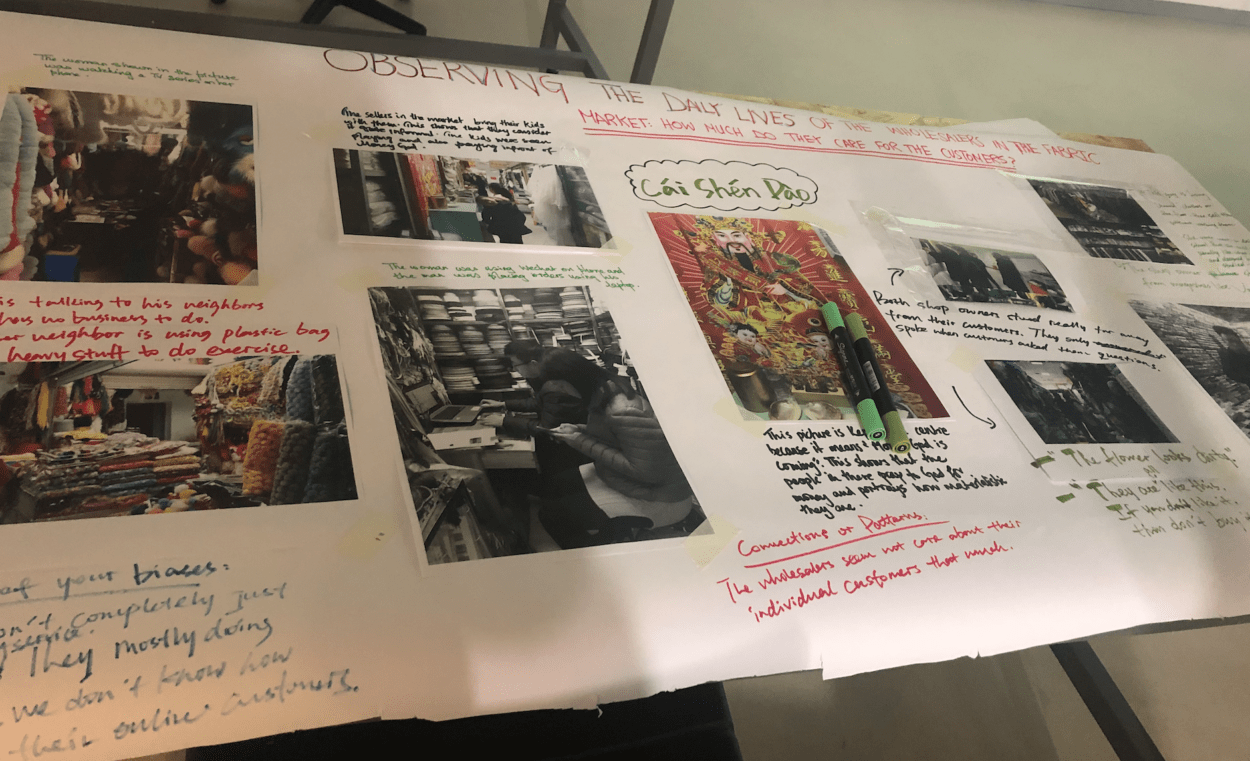
You can see that the picture of The Money God is in the centre as the people only pray for money as they’re quite materialistic. On one side we put the photos of the people just using phones, lifting weights, sleeping in their spare time. Whereas, on the other side there are photos of the people interacting with the customers (we looked at to what extend they were catering the needs/demands of the customers).
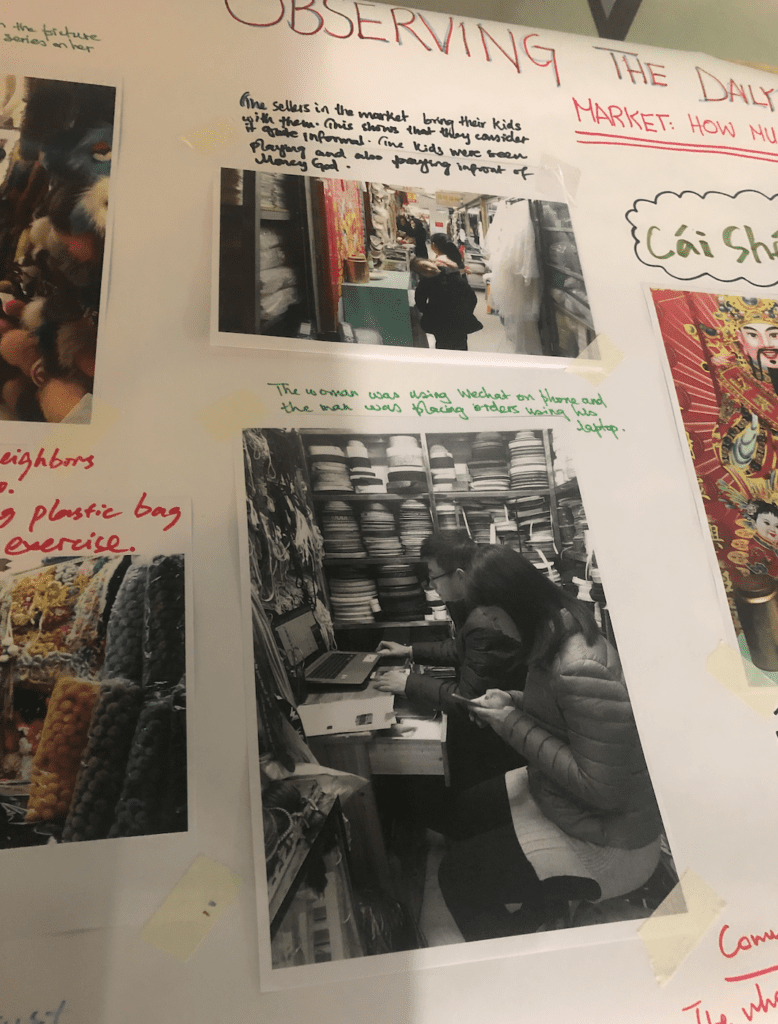
Photo-Essay Zine
For the photo zine we chose so me of the meaningful shots we had and made them tell a story. With the photos we added short descriptions so that the picture could be a bit more explicit. For the video we just showed the notion market where we showed many sellers during their work time and during the time when they were not working. We started out photo-zine with a photo of the Money God and then moved on to our observations. In the zine I tried to have a story for the people and with that I also took a first perspective shot of the shop so that the viewers can see what actually a certain person was selling. I also tried to add description of their stuff which they were selling, how much was the demand for a certain thing, how much was the price of a certain thing and what was the reaction of the people towards different things, how much were the sellers willing to sell to one person instead of bulk selling?
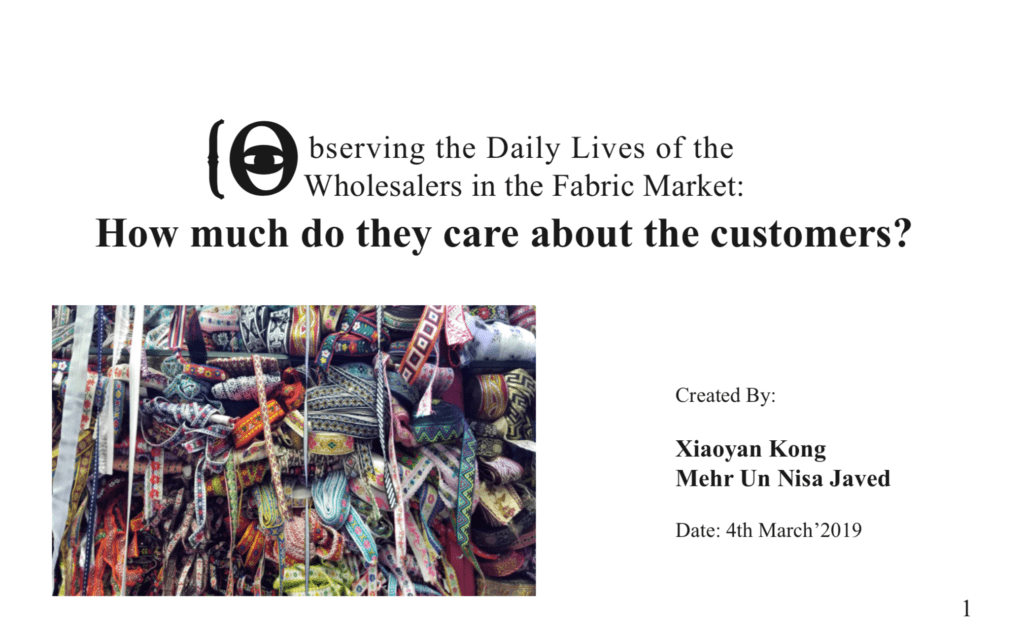
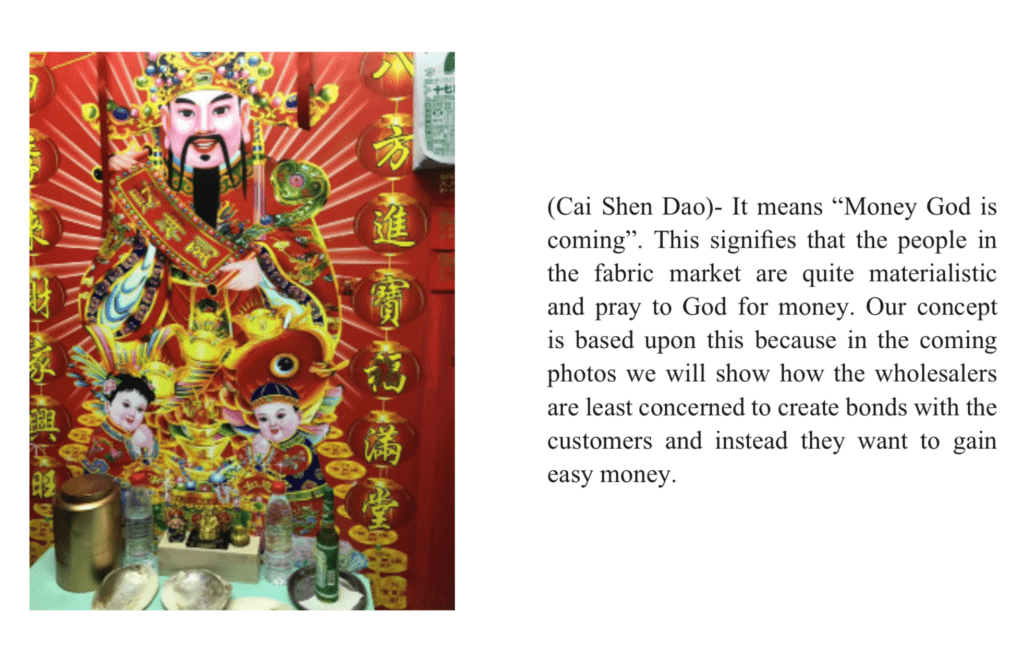
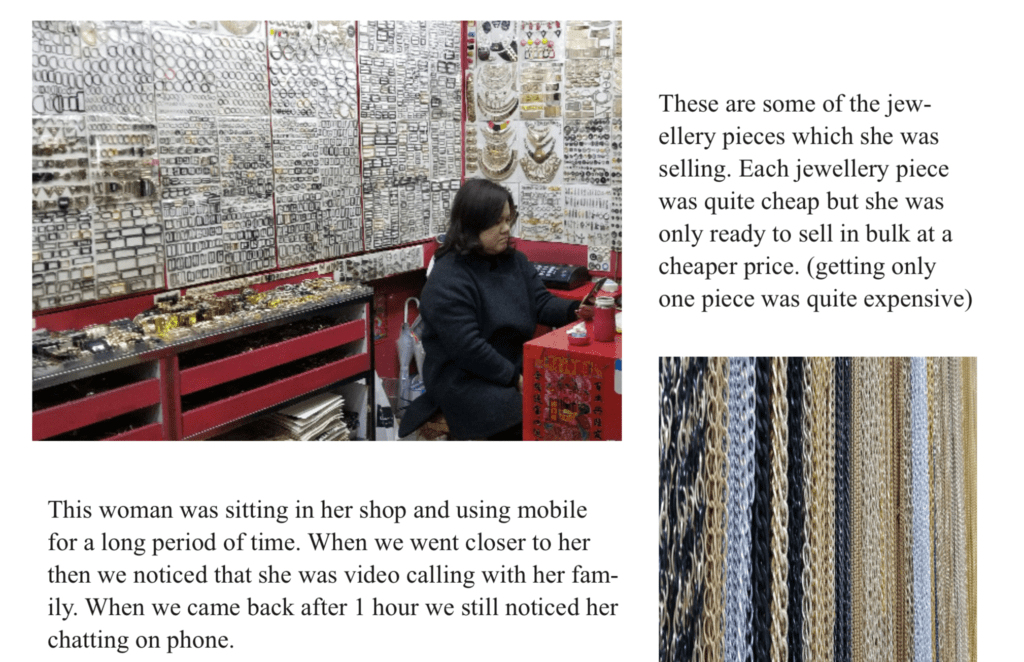
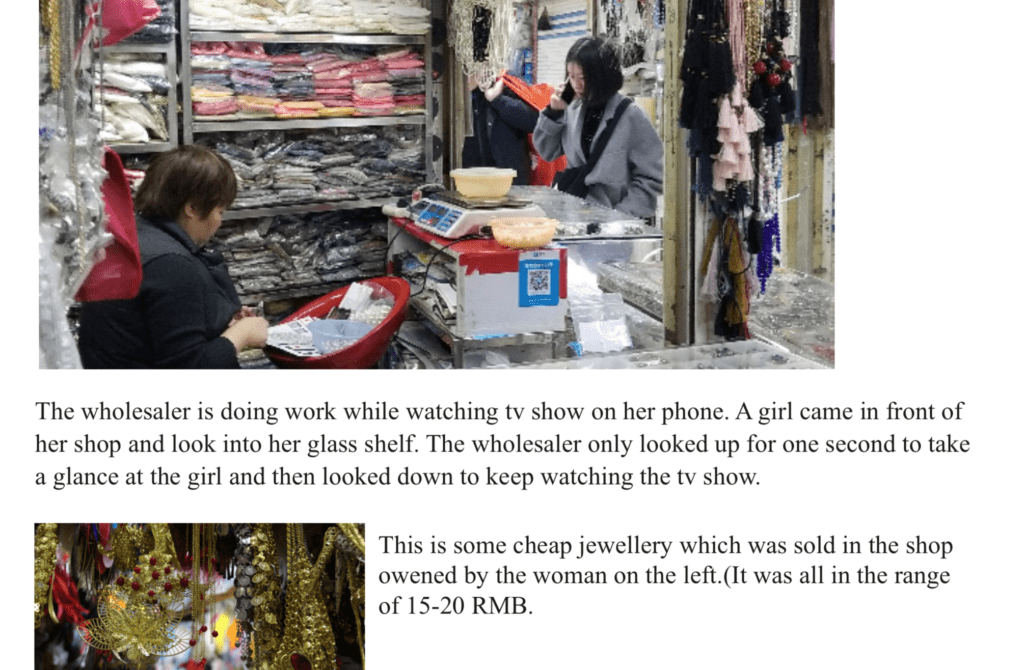
Video
In the video we basically started from the point where we got inside the bus and the moved on towards our research area. We tried to show the notion market only in the video as we only covered that for our research. We also covered a view interviews in the video.
Strengths of the research:
We conducted interviews which were participatory so we could gather wide amount of data
My partner was a native Chinese speaker so we had no issue in communicating with the sellers
Weaknesses:
We conducted the research for a very short period of time. For example, only about 3 hours which is not enough time to observe someones daily life. Maybe how they were behaving was due to their concerns of seeing so many people around them interviewing them. Moreover, maybe a lot of people were using mobile phones, watching videos etc on that day because it was a Saturday morning and maybe in the morning only not a lot of customers come to shop.
Name: Mehr Un Nisa Javed
Professor: Nimrah Syed
Date: 3rd March’2019
Objective: Write a reading response to Week III reading.
Reading Response:
I really liked this reading for several reasons. Firstly, it was very consumer-centric as it was talked about in the reading that during the design process focusing on the individual people rather than on target market enhances the sustainability. When designing the clothes it is quite important to see people wearing them and interacting with them and that is only possible when the garments are long-lasting so that people can develop emotional attachment with the clothes. Hence, this sense of great well-being derived from the clothing would help people to love their own self. This made me really think about my own self and how I have developed emotional attachment with one of the shirts I have. It is about 3 years old but I still keep it in my closet and try to wear it as much as possible because it makes me feel really confident.
“They are wearing clothes that represent who they are. Instead of creating stereotypes and generalized looks, we are creating a clothing environment that supports and sustains individual well-being”. This is the gist of the reading as the main goal in the fashion industry and for the designers should be to cater the needs of the consumers in a way which is not harmful for the environment and also fits the consumers needs.